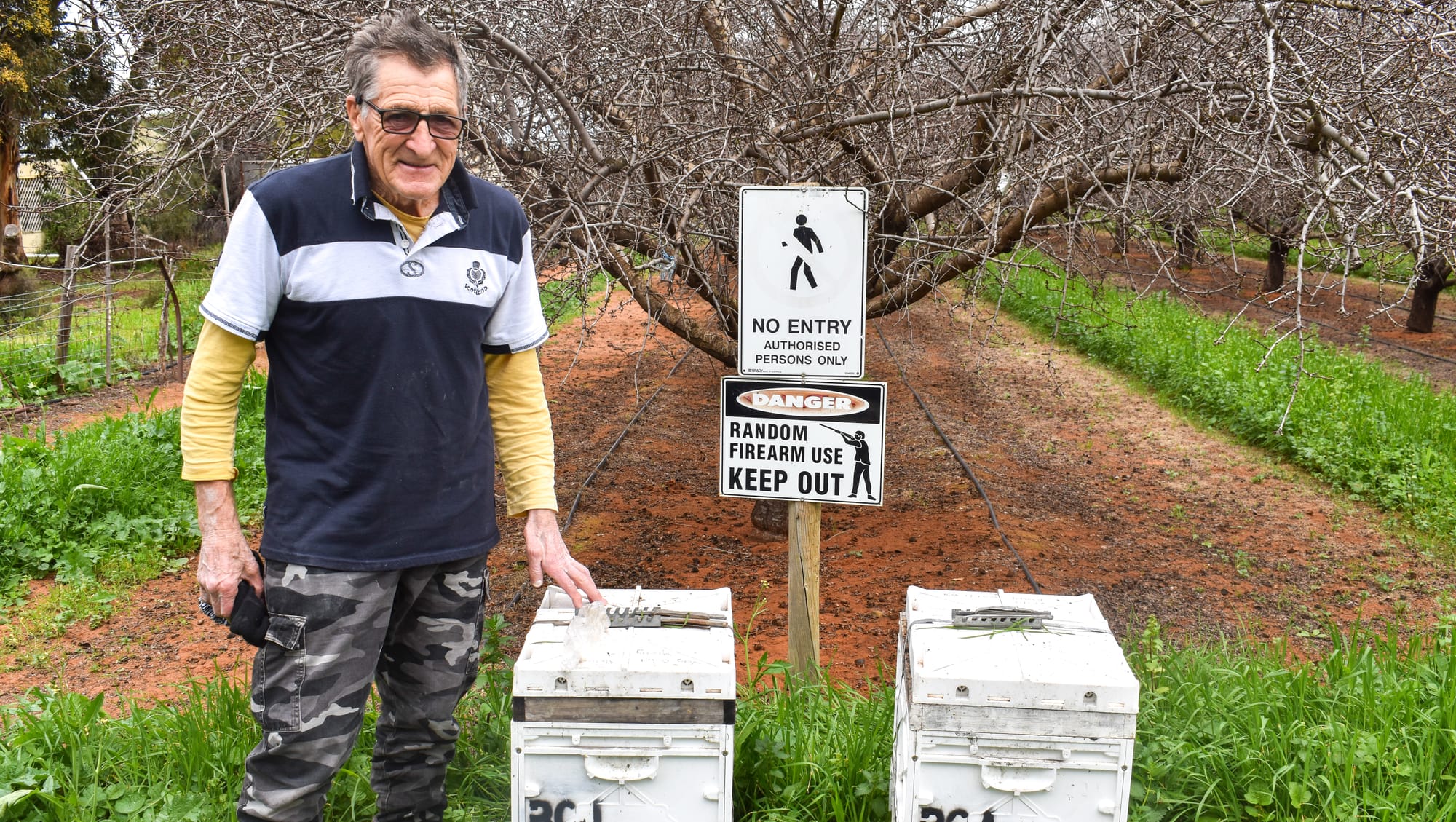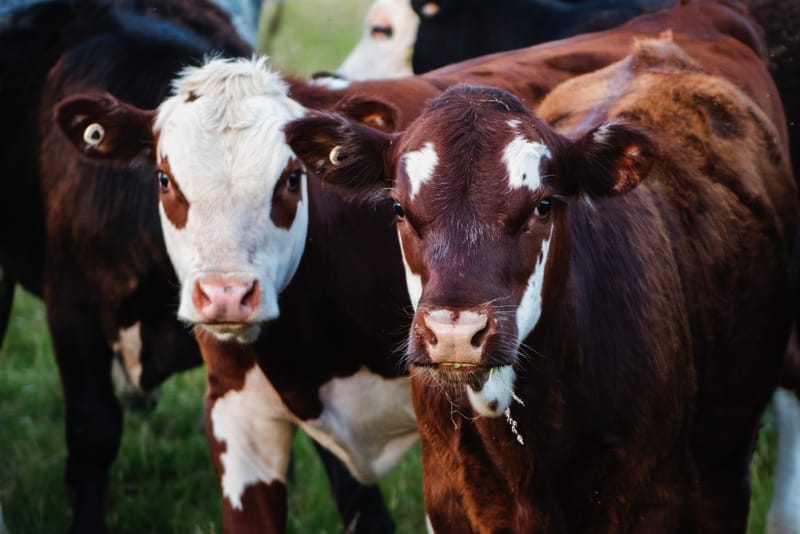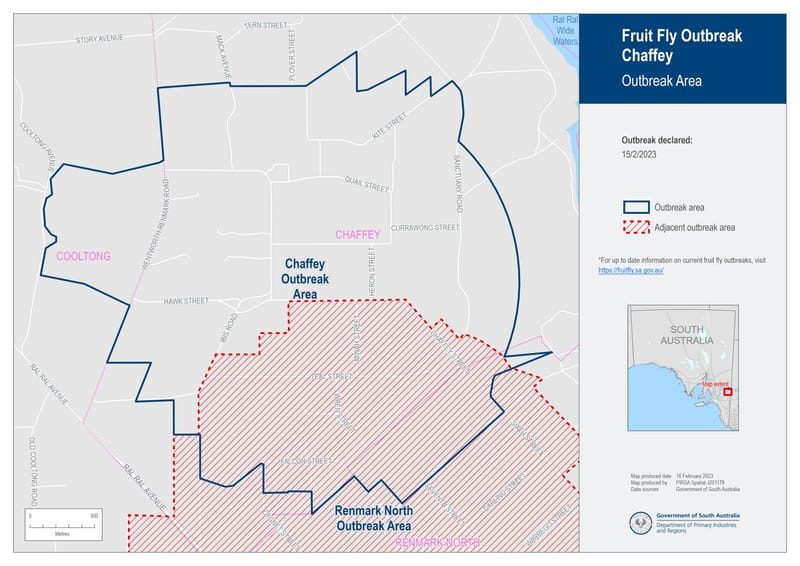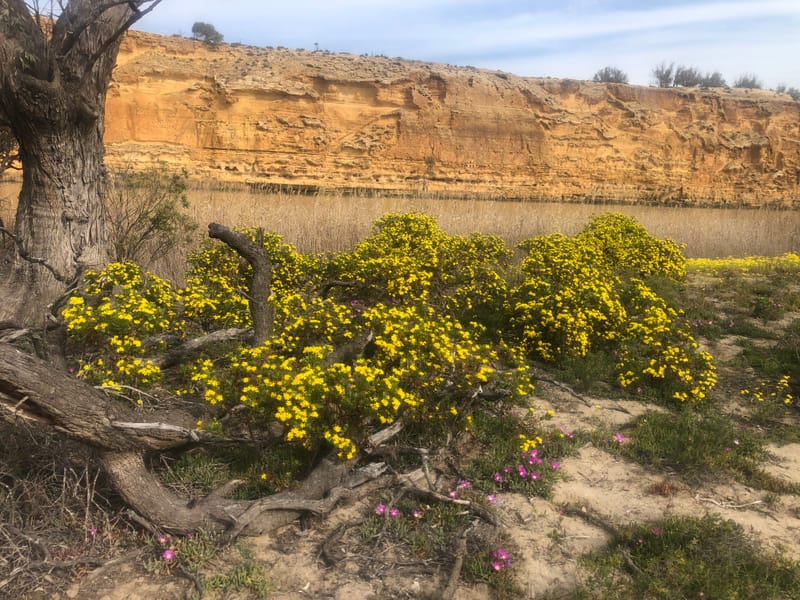Varroa mite: It only takes one
VARROA mite is a pest that many people are growing to learn all about, including Paringa beekeeper Robbie Johnstone, who is concerned about the potential affects that a varroa mite outbreak would have on the Riverland bee industry. Varroa mite was...

VARROA mite is a pest that many people are growing to learn all about, including Paringa beekeeper Robbie Johnstone, who is concerned about the potential affects that a varroa mite outbreak would have on the Riverland bee industry.
Varroa mite was first detected in Australia in late June at the port of Newcastle, with strong measures imposed quickly to stop the spread of the mite to other states, including South Australia.
Mr Johnstone, who has backyard hives on his property, including hives that pollinate almond crops, explained that a female varroa mite hitchhikes a ride on a female bee and lands in a hive, beginning the process of infection.
“When the female varroa lands in there she hops off the bee, and she goes into a cell that has a grub in it, waits for it to be capped, then lays an egg,” he said.
“The first egg she lays is a male and every 30 hours thereafter she lays an egg.”

Mr Johnstone said the problem with varroa mite is it only takes one mite to infect an entire hive.
“You only have to have one varroa in a hive and it will take them a long time to actually get out of the hive but in the meantime they are spreading,” he said.
“It is not uncommon for a female varroa mite to hitchhike a ride to another cell or hive, and she can get four to six cycles in one go.
They are insidious and they are deadly.”
Mr Johnstone explained he uses a sugar shake to check for varroa mite, which is typically used by beekeepers around Australia.
The sugar shake method involves getting a handful of bees in a jar filled with powdered sugar, letting it sit for about four minutes, and allows the sugar to warm.
This causes the mites to release from the bees, as the fine granules from the icing sugar sticks to their feet and they can no longer grip to the bees.
Then, the jar is turned upside down and slowly rotated over a container of water. The sugar will dissolve as it falls into the water, revealing if the hive is infested with varroa mite or not.
While the sugar shake method is effective, it is time consuming, with Mr Johnstone saying that it is not viable to do the sugar shake method on all hives, as it would simply take too long.

Mr Johnstone believes if varroa mite-infected hives were allowed into the Riverland, it would be a similar slippery slope to what happened when small hive beetle was first in Australia.
“What is annoying me, is they did it before,” he said.
“We had small hive beetle, not here, but they needed to pollinate our trees, so they brought them here and now we have them.
While mites don’t propagate well here in the Riverland, they are smart and they will evolve, and anything like that is going to have an effect on the hive.”
Mr Johnstone believes South Australia will be able to struggle through the almond pollination season with just local bees, but is concerned about the NSW bees that will be brought to the Sunraysia region for pollination.
“That is going to be right on the border, and this risk-management stuff just doesn’t work,” he said.
“It is just a nice way of saying ‘if we are going to bring them here, you will be lucky if you don’t get them’.
“It is very simple to get them (varroa). They just hitchhike a ride to a hive and that’s that. So, if they let in NSW bees, of course we are going to get them, and how are they going to guarantee we won’t?
“They are a drain on resources of the hive, and even the bees that survive, they live less.
“So, all in all, we don’t want them.”





